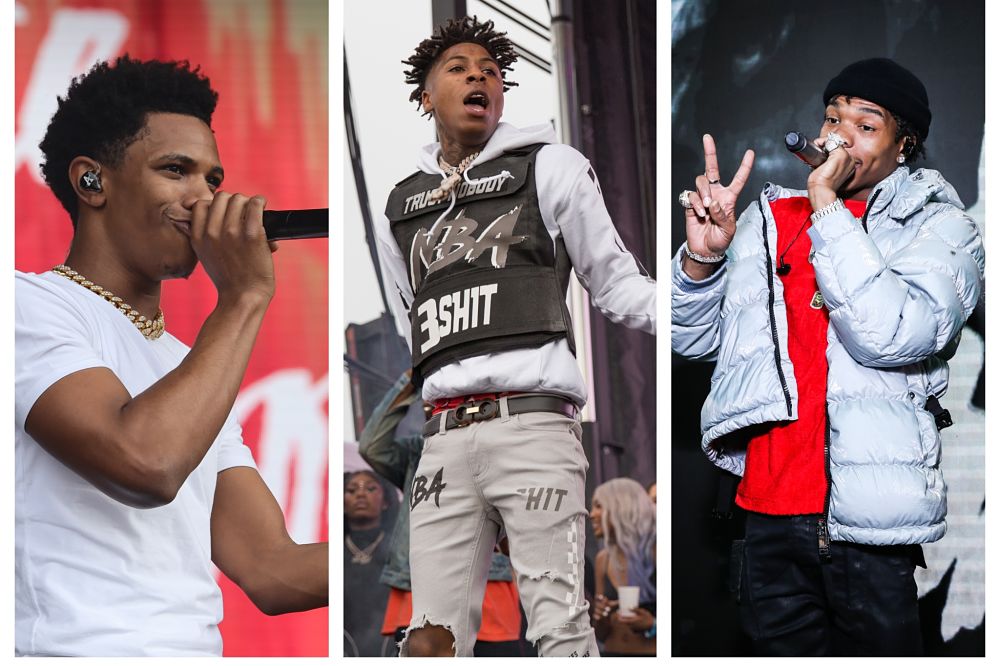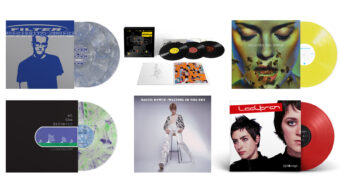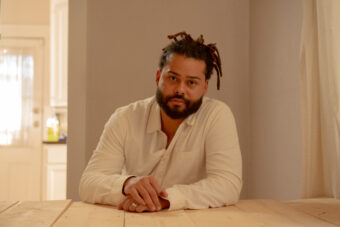The churn of new major-label hip-hop releases never stops in 2020, but the genre’s top tier artists tend to wait until spring, if not summer, to drop albums. That means that while Drake and Kendrick Lamar albums are likely on the way this year, the early months of the year are a chance for mid-level stars and up-and-comers to seize the moment. The last three Fridays of February have seen a weekly procession of releases from a trio of younger artists who are angling to be rap’s next superstars.
Atlanta’s Lil Baby released My Turn on Friday and in the past two weeks, New York’s A Boogie Wit Da Hoodie released Artist 2.0 while Baton Rouge rapper YoungBoy Never Broke Again released Still Flexin, Still Steppin. Individually, these three emcees are fairly different artists from different cities, reflecting different influences at different points on the “street” versus “pop” spectrum. But they all rap in singsong flows, and are at similar places in their careers: well established with at least one platinum album to their credit, but still nudging towards something bigger. They also may be the three biggest rappers right now whose fanbases are primarily teens. There are plenty of other young rap stars who have become ubiquitous to all ages thanks to one massive hit (Roddy Ricch, Lil Nas X) or an inescapable procession of singles and features (DaBaby, Megan Thee Stallion). But at the moment, high schoolers debate YoungBoy vs. Lil Baby like their older brothers might debate Kendrick vs. J. Cole.
Not too long ago, it felt like young America’s hip hop of choice was overwhelmingly “SoundCloud rap,” more specifically, a small army of rappers popular on the streaming service known for colorfully dyed dreadlocks and affection for emo rock and anime. But a lot has changed since then: two of SoundCloud rap’s biggest stars, XXXtentacion and Juice WRLD, died suddenly and shockingly, 6ix9ine is in jail. Others, like Lil Yachty, have started to fade from the charts and Lil Uzi Vert is still slowly coming out of a label dispute that’s left him without a new album for two-and-a-half years. It feels a little like hip-hop’s next wave has, for the time being, moved back to slightly more traditional stars like A Boogie and YoungBoy, guys whose look and music wouldn’t have been too out of place in 2014 before anybody ever heard of Lil Pump.
Lil Baby is the most popular of the many Young Thug proteges currently running Atlanta. He notched three top 5 albums on the Billboard 200 in 2018 alone, and for a moment, it seemed like he may even eclipse his mentor commercially before Thug’s career got back on track with last year’s So Much Fun. My Turn is full of uptempo tracks with the collaborators Lil Baby frequently does his best work with, including Moneybagg Yo and Gunna. “Gang Signs,” co-produced by Three 6 Mafia’s DJ Paul, is a welcome detour from Lil Baby’s usual muted trap sound into some rowdy old-fashioned crunk. But in the hours after My Turn was released, the song title that trended on Twitter was “Emotionally Scarred,” the album’s most vulnerable and confessional track. After the lovelorn “Close Friends” became one of Lil Baby’s biggest hits last year, it feels like fans are clamoring for his most personal material.
Baton Rouge, Louisiana is a city that’s traditionally bred more regionally beloved rappers than the worldwide superstars launched over an hour away in New Orleans. NBA YoungBoy, as he’s more widely known than the longer, more awkward version of his stage name that appears on album covers, is a loyal student of Baton Rouge’s established legends Boosie Badazz (who he’s working on an album with) and Kevin Gates (who he made an EP with in 2018). Still Flexin, Still Steppin is as staunchly rooted in that tradition as any of his previous releases; it opens with “RIP Lil Phat,” a tribute to the Boosie labelmate who was murdered in 2012.
In some ways, YoungBoy is already closer to hip hop’s mainstream than Boosie or Gates ever got. For much of the past year, he’s been the single most viewed musician on all of YouTube, edging out household names like Post Malone. He’s done this without any single breakthrough song defining him or hitting heavy radio rotation across the country – he simply drops a lot of songs and makes a ton of relatively low budget videos for them. His audience is overwhelmingly young and overwhelmingly southern, and they’re more likely to get music from YouTube than subscription streaming services like Apple Music or Spotify.
Still, Flexin is a good album – “Fine By Time” stands out with some surprisingly beautiful pianos cascading over the propulsive Vadebeatz track. But YoungBoy is still kind of a shallow and repetitive writer – he touches on a lot of the same notes of trauma and paranoia as Boosie and Gates, but he rarely summons the passion or attention to detail of their best work. And his crooning on songs like “Red Eye” can be a little hard to take if you’re not in love with the strained upper register of his voice. It doesn’t sound like an album destined for blockbuster success, but it might be anyway: in January, Billboard started factoring YouTube views into chart positions on its album charts.
Bronx native A Boogie Wit Da Hoodie is from hip-hop’s birthplace, but he’s less beholden to hometown influences than Lil Baby or YoungBoy. A Boogie is the kind of post-Drake melodic rapper than can, and has, come from every city and small town in America and Canada over the past decade. A Boogie interpolated Michael Jackson on his biggest hit, last year’s “Look Back At It,” and he continued mining the past for melodies on Artist 2.0. He sings a little Fantasia on “Cinderella Story,” and a little Mariah on “R.O.D.” He brings nothing of himself to the songs but a nasal voice and some generic New York braggadocio.
The most unintentionally funny moment on Artist 2.0 is at the top of the song “Right Back,” where two circa 2020 hip-hop trends converge: ostentatious tags announcing the producer of the song, and songs that were made by a small army of producers but don’t really sound like it. “Right Back” features 4 producer tags in the first 10 seconds of the song – confusingly, one is from Hitmaka and another is from Billboard Hitmakers. Despite all the cooks in the kitchen, the only memorable thing about the track is the oft-sampled piano from the DeBarge song “A Dream.”
A Boogie appeared on the 2017 edition of XXL’s annual Freshman issue, which features 10 up-and-coming rappers on its cover every year. The cover has become a rite of passage for nearly every major rap star of the past decade. But Lil Baby and NBA Youngboy, like Drake or Cardi B before them, were never XXL Freshmen, perhaps because by the time the magazine was ready to recognize them, they were already too big to share a cover with nine other rappers. Each of these three guys has already moved to the head of the class – they’ve outlasted that two-year bubble that tends to pop when audiences start to bore of many rappers and move on to someone else. That said, their new albums all tread water enough that it’s not hard to imagine kids getting bored of one of them, or all of them, sometime soon. Or they could be the next A-list – I really have no idea, I’m too old to call it.





